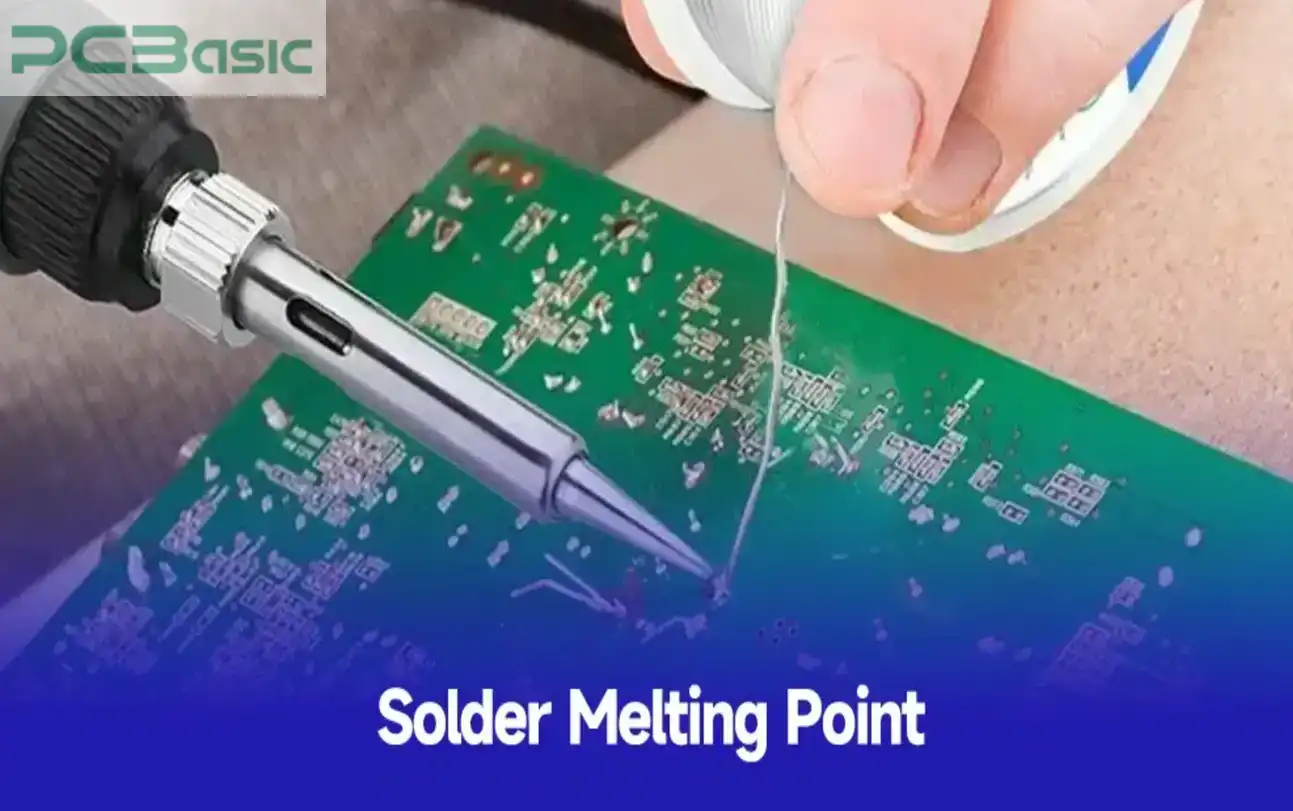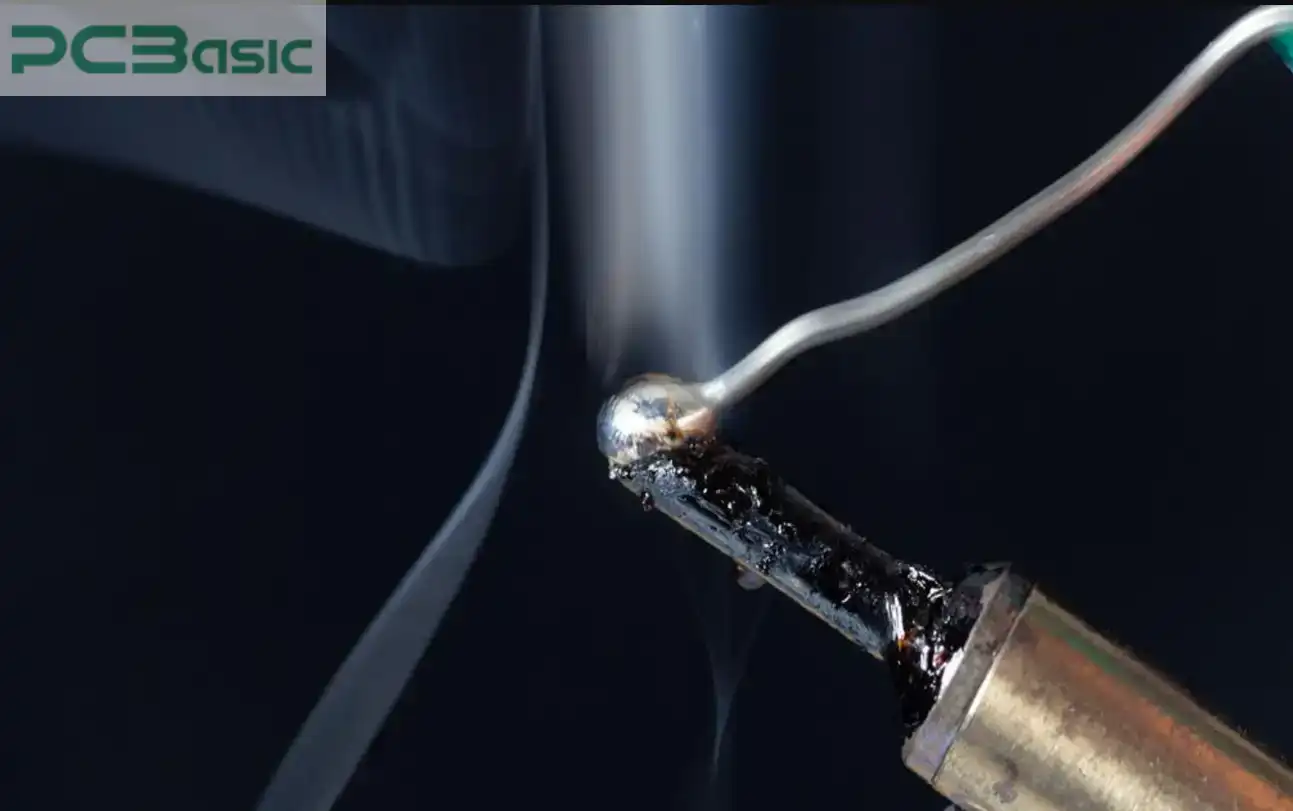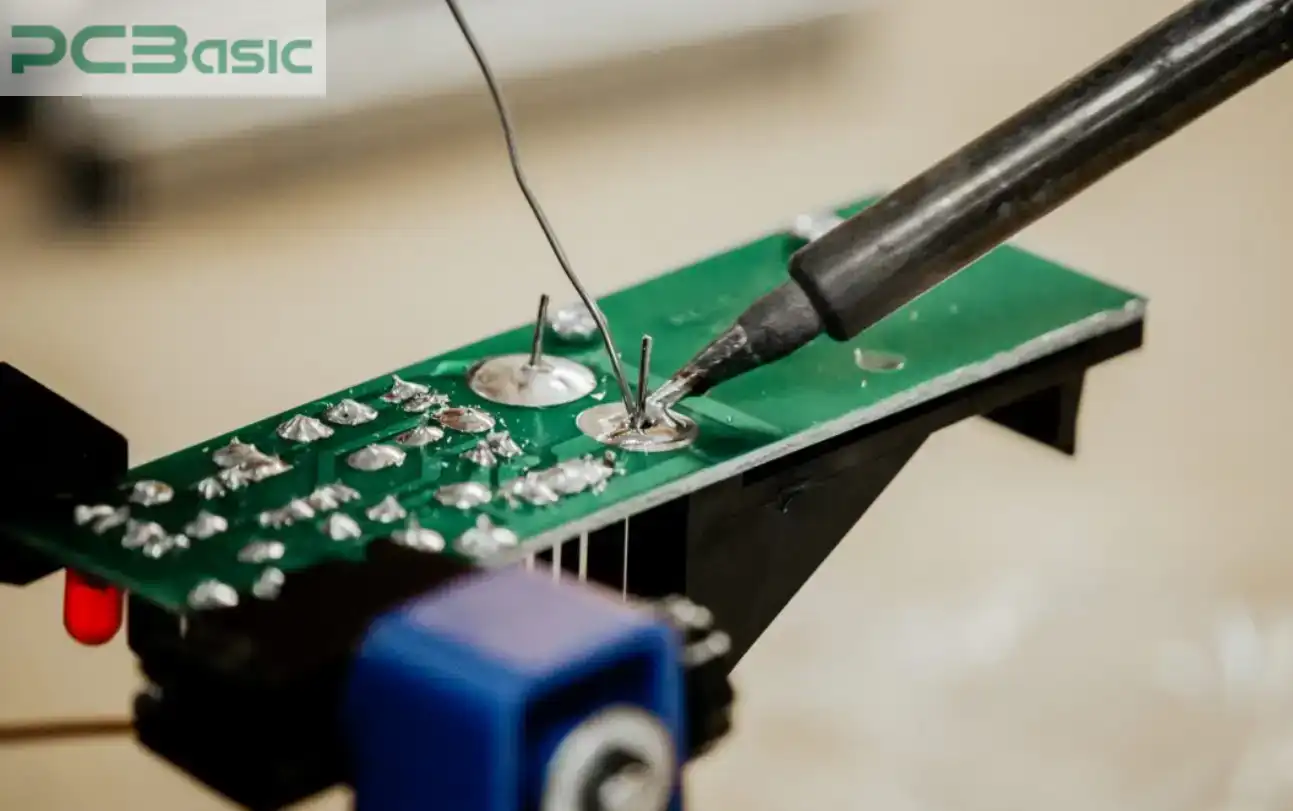Global high-mix volume high-speed Shenzhen PCBA manufacturer

Ru
9:00 -18:00, Mon. - Fri. (GMT+8)
9:00 -12:00, Sat. (GMT+8)
(Except Chinese public holidays)





Global high-mix volume high-speed Shenzhen PCBA manufacturer

Ru
9:00 -18:00, Mon. - Fri. (GMT+8)
9:00 -12:00, Sat. (GMT+8)
(Except Chinese public holidays)





HomePage > Blog > Knowledge Base > Solder Melting Point| A Crucial Role in PCB Soldering
Solder melting point refers to the temperature at which solder melts and adheres to the parts. These assist in making toys and gadgets functional. Tin, lead and copper are the examples of metals that have different heat capabilities for melting. Solder is used to connect small parts in toys and other appliances; it can also form bonds between the parts.

Solder solidifies to some temperature and on subsequent heating, it turns from solid to liquid state. Tin-lead solder, similar to Sn-Pb, has a melting point of 183°C. This heat connects capacitors and resistors. The solder melting point is the temperature at which the solder melts and adheres to the components on the panel. Copper (Cu) tabs are for holding things together when hot.
An example of lead-free solder is SAC305 Sn-Ag-Cu, which has a melting point of about 217°C. The soldering temperature must be precise to ensure proper bonding.
They are used in safer equipment. With the soldering iron set at 350°C, the solder melts sooner. Something called flux, a special paste, does help. This is important for having a close bond in electronics.
The heat at which solder solidifies is referred to as the melting point. SAC305 solder, with its flux-core design, is known to melt at a temperature of 217°C. The solder melting point is mostly applicable in boards with small components. What temp does solder melt?
Tin-lead (Sn-Pb) solder comes in the form of a paste that melts at 183°C enabling easy application. Solder with a temperature of 350°C melts very fast because the soldering iron is hot. It aids in the wetting of the PCBS pads as well as keeping the parts joined together by the solder.
Solder bridges where connection lands touch by chance are not made. This is important for creating devices such as radios and phones.
Solder must have a certain temperature range at which it can be used effectively. Solder melting point demonstrates how solder is applied with small parts on PCBs.
Other lead-free selling, such as SAC305, has a melting temperature of 217℃. It also ensures that the parts joining together would have the right kind of heat for correct joining. High temperatures of 400°C cause the burn of the PCB, while 350°C is ideal for the process.
Resistors, diodes, and transistors must have good solder joints in order to operate properly. The solder wets into small areas and interconnects the electrical paths. In addition, flux cleans the surface to help. The process helps to make electronics solid and long-lasting.
Solder composition affects the rate at which things melt. Tin (Sn) and lead (Pb) make a lot easier. Solders have 60% tin and 40% lead and melt at temperatures ranging from 183°C to 190°C.
Incorporation of silver (Ag) slows down its melting and may melt at 221°C. Copper (Cu) helps, too. It reduces the melting point by 20°C.
Some solders are made of indium (In) and have a melting point of 157°C. It is important to note that the solder melting point varies as one adds or eliminates various ingredients. This combination of metals is perfect for small electronic components.
The metals are combined together and make the solder strong. Tin and lead are combined in a way that they form a particular shape of solid material. When they melt these metals along with other metals, for instance, bismuth (Bi) or zinc (Zn), the solder's melting point is shifted by 30°C.
It hardens on the outside and also inside the solder; small crystals are created, making it stronger. They help in special areas such as surface-mount technology (SMT). Some blends solidify at close to 183°C and the constituent ingredients determine the rate of cooling of the solidification mixture.
This structure facilitates keeping the solder steady when it perhaps is hot. Phase diagrams assist in demonstrating how alloys behave when they solidify.
Additives change solder. Solder-containing antimony (Sb) has a higher melting point than tin-lead solder by 25°C. Flux enables the solder to stick better on metal parts through a cleaning process. What many people do not realize is that certain fluxes, such as zinc chloride (ZnCl₂), function for lower heat.
The other fluxes do not contain halides and therefore, they are not as dangerous as the previous ones. Flux also reduces the melting point of the solder a little to make the formation of joints easier. Nickel (Ni) is a reinforcement ingredient that improves the strength of the joint.
Corrosion inhibitors increase the lifespan of parts without rusting. These are crucial in solders such as SaoC305. These additives and flux complement each other as they assist in making good interconnections.
The usage of solder determines how it melts. If the air is wet, the solder melting point rises up the scale. In this case, humidity can even alter solder quality by as much as 30%. Hot places require solder to be maintained within the 150°C – 200°C range. In some instances, air causes the solder to rust.
And since temperatures get lower with increasing altitude due to the thinness of the atmosphere, solder in mountains may melt at 10°C less than in other regions. Solder can be brittle and break apart when it cools rapidly.
There are changes which occur in the environment which influence the ability of solder to adhere to diverse objects, for example, outdoor electronics.

Soldering causes the solder to change its state from solid to liquid when it gets hot. In soldering, the melting point of the solder depends on what the solder itself is made from. Some solder melts at 183°C (361°F). Other types, however, melt at 217°C (423°F). It is best in the right heat.
The best temp for soldering depends on the materials being used. About 250°C is usually recommended. They suggested utilizing a simplest melting point solder in case some of the parts are easily breakable. Each type has a different solder melting temperature that should be met for effective soldering.
That is why the type of solder that should be used in the project is a very crucial factor to consider. Soldering adheres well when it is at the right temperature.
Low-temperature solder has a comparatively low melting point, which means it can be soldered at a lower temperature. The solder melting point for these can be 138°C (280°F). CNC is particularly useful when it comes to small details, such as connectors on printed circuit boards.
It has flux inside the wire so that it can easily stick. The lowest melting point solder is the one that takes only 180°C to melt in order to flow into the correct position. This makes it easy to use without straining parts.
It melts quickly, and it has a soft texture. This best soldering temperature is applied in many small devices. So that they do not overheat and crack. A low-temp solder has the advantage of easy flow, hence aiding in proper connection.
High-temperature solder can be used to make soldered joints, which can melt when the temperature is high. It is also important to note that the solder melting temperature can reach temperatures as high as 450°C or more depending on the solder type. This solder is strong. It prefers higher temperatures, especially when soldering; the best temperature should be 350°C or above.
This solder is used for big things like motors. This one retains its rigidity even when it loses its cool. Some types are made from silver or copper. They have durability, and do not get brittle, and thus do not break easily. That’s why high-temp solder is used on components that get so hot often. These solders are hard and stand firm.

When using soldering, it is very important to ensure that the surface to be soldered clean enough to form good connections. Any kind of film on PCBs becomes a barrier to constitute solder joints mechanically. Green oil or dust on PCBs can make soldering difficult. Hygiene plays a role here at 183°C. That is where tin-lead solder melts.
Purging with 99% isopropyl alcohol facilitates the elimination of dirt via wiping. This makes the solder stick better. Dirt prevents heat to traverse resulting in the formation of bad joints. This solder has to work: pads have to be clear for the job. For good bonding, the solder melting point plays a crucial role.
A clean surface allows the solder to flow unfettered without hindrance by an obstructing factor.
It is used mainly to ensure that the board is warm. Such configuration of the surface maintains the temperature at 200°C, allowing heat distribution to be even.
Preheating stops problems. Solder has the capability of melting at 183°C, and this is essential for the right melting of the solder. Heat guns also assist in warming the pads first. This step helps to avoid damage to some parts, like ICs, because they will come without being tampered with.
Otherwise, heat could bring cracks. Preheat is useful in preventing those issues from occurring in the first place. In particular, the right heat of around 150°C does not stress the parts of the product.
That is why some components, such as transformers, require more heat to operate efficiently. That makes the whole soldering process easier and smoother.
Cleaning of the soldering tip ensures that heat is distributed properly. When it is dirty, the efficiency of the process slows. Irons are wiped with a brass sponge to clean them and remove dirt on the surface. This allows smooth connections.
It is interesting to note that for the best results, the tip should remain at 350°C. This happens when the solder melts at a solder melting point of around 183°C, which leads to good bonding. The heat no longer works efficiently due to oxidation on the tips.
The prospects acknowledged this by pointing out that cleanliness was instrumental in the formation of firm joints. The rawness or the purity of the tip can determine the quality of the connection or the connection connectivity. This maintains the work accurate without error. For soldering, a good tip makes a big difference.
As with every soldering process, it is crucial to get the right amount of solder done. If taken to the extreme, it may lead to concerns such as short circuits. The solder solidifies at a solder melting point of approximately 183°C and wets the joint. Insufficient solder results in poor joint formation, while excessive solder results in the formation of bridges.
Excessive or too little of it means that the part does not bond as well as it should. That is why it is relevant to control how much one uses. Thinner solder wires, such as 0.8mm, are easier to handle since they are flexible and smooth. It retains the neatness of work.
Avoid putting too much to stop issues like overheating. Good joints occur when a few amounts of soldering are made for a given component.
It is evident that proper use of equipment and optimized methods of action reduces the level of difficulty in a particular task. The pad and pin should be heated at the solder melting point of 183°C on the pad and pin. This assists the solder to melt in the correct manner. Solder composition is crucial for solid connections. Never apply pressure to the solder.
Instead, heat should be used on the pad and the part that needs to be treated so that it comes out to be like the others. It means that the solder flows well when the tip is at around 350°C. Maintaining the right angle also assists in ensuring that the connection is well-covered.
A solder wire with a thickness of less than 0.8mm should be selected where point-to-point soldering is required. Avoid too much flux. It helps avoid damaging the components, such as resistors or even capacitors, when handling the circuit. That's how strong and clean joints are made.

Solder melting point assists to hold parts firmly since they will interlock closely. That is why heat is important. For more information on solder melting points, you can visit the website of PCBasic.

Assembly Enquiry
Instant Quote